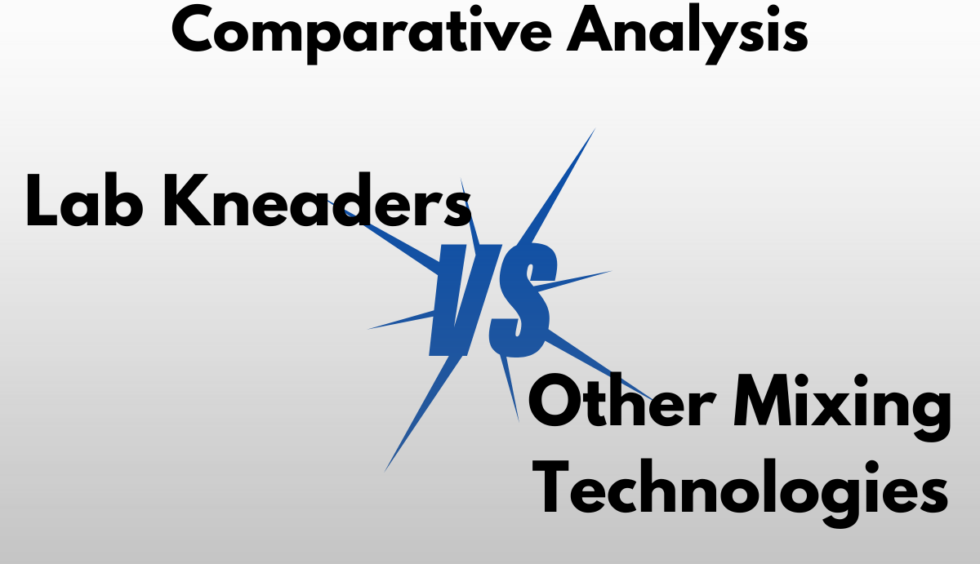In the world of laboratory research and development, efficient and effective mixing is paramount. Choosing the right mixing technology can significantly impact the success of your experiments. While lab kneaders are a popular choice, several alternative rubber mixing technologies offer unique advantages. This article will provide a detailed comparison of lab kneaders with other common mixing technologies, highlighting their strengths and ideal use cases.
Lab Kneaders
Lab kneaders are versatile workhorses in the lab, suitable for a wide range of mixing applications. They utilize a sigma blade design that folds and stretches the material, ensuring thorough homogenization.
Advantages:
- High shear: Lab kneaders excel at high shear mixing, ideal for dispersing viscous materials, breaking down aggregates, and promoting good particle size distribution.
- Deaeration: Many lab kneaders offer vacuum capabilities, allowing for efficient removal of air bubbles trapped within the mixture, crucial for achieving consistent results and preventing product defects.
- Kneading action: The folding and stretching action of the sigma blades is particularly effective for incorporating solids into liquids, dough formation, and mimicking large-scale production processes.
- Versatility: Lab kneaders can handle a wide range of viscosities, from low viscosity liquids to highly viscous pastes and doughs.
Use Cases:
- Mixing highly viscous materials (e.g., polymers, resins, adhesives)
- Dispersing solids into liquids
- Dough formation
- Deaeration of mixtures
- Simulating large-scale mixing processes in R&D
Alternative Mixing Technologies
While lab kneaders offer numerous advantages, other mixing technologies may be better suited for specific applications. Here’s a comparison of some popular alternatives:
-
Overhead Stirrers: These are simple and economical solutions ideal for low to medium viscosity liquids. They utilize a rotating impeller to stir the mixture.
- Advantages: Simple to operate, affordable, good for low viscosity mixing.
- Disadvantages: Limited shear capabilities, not suitable for high viscosity materials or deaerating mixtures.
-
High Shear Mixers: These mixers employ high-speed rotating blades to create intense shear, effective for homogenizing emulsions, breaking down particles, and achieving fine dispersions.
- Advantages: Excellent for achieving fine dispersions and emulsions, suitable for shear-sensitive materials.
- Disadvantages: Can generate heat due to high shear, may not be ideal for highly viscous materials.
-
Ultrasonic Mixers: These mixers utilize ultrasonic waves to create cavitation within the mixture, promoting efficient mixing and deagglomeration.
- Advantages: Effective for mixing shear-sensitive materials, good for deagglomeration and nano-particle dispersions.
- Disadvantages: Limited working volume, may not be suitable for large batches.
-
Magnetic Stirrers: These mixers utilize a rotating magnetic field to stir a stir bar within the mixture. They are simple, quiet, and ideal for low viscosity applications.
- Advantages: Simple, quiet operation, good for low viscosity mixing, safe for unattended operation.
- Disadvantages: Limited mixing power, not suitable for high viscosity materials.
Choosing the Right Technology
The ideal mixing technology depends on several factors, including:
- Viscosity of the mixture: High viscosity materials require high shear mixing capabilities offered by lab kneaders or high shear mixers.
- Desired outcome: For fine dispersions and emulsions, high shear mixers may be preferable. For deaerating mixtures, lab kneaders with vacuum capabilities are ideal.
- Shear sensitivity of the material: For shear-sensitive materials, ultrasonic mixers or overhead stirrers may be better options.
- Batch size: Lab kneaders and overhead stirrers can handle larger batches compared to ultrasonic mixers or magnetic stirrers.
Final Words
Lab kneaders are valuable tools for researchers due to their versatility and high shear capabilities. However, understanding the strengths and limitations of alternative mixing technologies allows you to select the most appropriate tool for your specific application. By considering the factors mentioned above, you can ensure efficient and effective mixing in your laboratory, leading to successful research outcomes.







